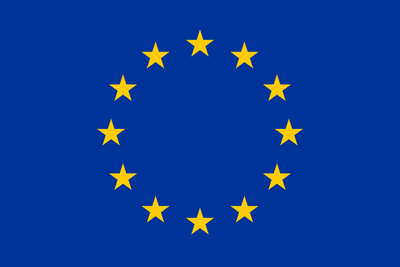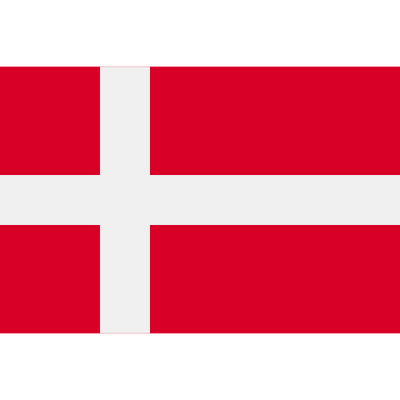
HSCPH'S SPECIALLY DEVELOPED MATERIALS
OUR TEXTILES CONSIST OF THE FOLLOWING:
FLEECE 70% polyester (min. 50% recycled) & 30% viscose - textile production in Italy
JERSEY 96% viscose 4% elastane - textile production in Portugal
COTTON 95% cotton (organic) 5% elastane - textile production in Portugal
BANDS with and without logo 100% cotton - produced in Denmark
CUTTING & SEWING takes place in Lithuania.
VISCOSE
The soft, lightweight, and durable viscose we use is a regenerated fibers made from decomposed and chemically treated wood. At HSCPH we only use Birla™ viscose, which is FSC and USDA certified, and Lenzing™ ECOVERO™ viscose, which uses only certified and traceable wood from responsibly managed forests. Lenzing™ ECOVERO™ viscose is certified with the EU Flower, the EU's public eco-label. We have chosen these qualities because no pesticides are used, the amount of water is reduced, and the trees are replanted.
COTTON (ORGANIC)
Cotton is a natural fibre made from the seeds of several different species of cotton. The most commonly used species for clothing is a native Mexican plant - "Upland Cotton". HSCPH has chosen to use only organic cotton grown in India and Turkey. All kinds of pesticides and chemicals are banned in organic production, while minimising water consumption is also taken into account. Our knitted cotton qualities are continuously developed with our partner in Portugal. We have added 5% elastane to ensure a higher functionality and better fit. The development of our RIB quality is a perfect example of a development project where the goal is to achieve high elasticity while ensuring that the fabric's ability to re-contract is high. The result is that there are no dull bulges at the knees and bottum even after a full day of use. In children's clothing, it is very important that the neck of a jumper can both stretch enough when putting it on and contract and close nicely to the neck throughout the day.
GROS GRAIN RIBBON – COTTON
4 years ago, we decided to move the production of our signature ribbons to Denmark. Together with the weaving mill, we have developed the qualities exactly the way we want them. The cotton is grown in Turkey and India, dyed in Spain and our annual 100,000 metres are woven in Denmark. The ribbon is colourfast and does not stain when you follow the washing instructions. If a white style is soaked in a harsh detergent for many hours, there is a risk of staining from the ribbon.
ELASTANE
Elastane is a synthetic, oil-based fibre. As a material, it is durable, water-repellent and breathable and is known for its special elasticity. Therefore, it is often included in material blends with e.g. viscose and cotton, where it adds elastic flexibility. HSCPH has a limited use of elastane, but we see a great advantage in it, as it extends the lifespan of natural fibres. Our viscose contains 4% elastane, our organic cotton (sweat & rib) contains 5% elastane.
POLYESTER
Polyester is a synthetic, oil-based fibre and one of the most commonly used materials in the textile industry, partly due to its abrasion resistance and technical properties that make the elastic fabric flexible to work with and long-lasting. At HSCPH we only use the best quality polyester and through our Oeko-Tex® certification we ensure that there are no residues of heavy metals or chemicals.
We always strive to be better at everything we do and are constantly looking for even better materials for our production. That's why we're also exploring innovative alternatives to reduce our use and, in the long term, completely replace polyester in our HSCPH fleece without compromising our quality.There are many milestones along the way, which we will continuously present towards the goal of a polyester-free product by 2028.
STANDARD 100 by OEKO-TEX® Class 1
Documentation of various sustainability efforts serves as important and transparent information for consumers to make informed choices and navigate an often opaque textile industry. When it comes to textiles, the chemicals used in the product are rarely visible or labelled. Unfortunately, some chemicals can be allergenic or carcinogenic, while others can be endocrine disruptors and have negative effects on the reproductive system. At HSCPH, we are therefore proud that in October 2021, all HSCPH products have been approved with the STANDARD 100 by OEKO-TEX® Class 1 labelling.
HSCPH's product certification with STANDARD 100 by OEKO-TEX® means that all components and dyes in HSCPH's finished products and materials - right down to the sewing thread - are checked for substances that are considered harmful to health, such as hazardous chemicals, phthalates, formaldehyde, heavy metals, impregnations, etc.
STANDARD 100 by OEKO-TEX® distinguishes between four product classes, where requirements for a maximum content of harmful substances are graded. The product class with the strictest requirements is class 1. With this class, certification is obtained to produce products for children and babies. Annual checks are carried out on all sub-elements in all our designs. All HSCPH products are certified in Class 1.
The labelling scheme, STANDARD 100 by OEKO-TEX®, is part of OEKO-TEX®, a globally recognised textile health labelling scheme run by the voluntary OEKO-TEX® association with representatives in each country. Only products that comply with the requirements set by OEKO-TEX® can be authorised to carry the label, and the requirements are continuously adjusted.
The Danish Technological Institute represents Denmark and facilitates the application process, testing and final approvals of the various components of a textile product.
You can read more and check the validity, content and product classes of a STANDARD 100 by OEKO-TEX® certificate by clicking here and entering the certification number.





